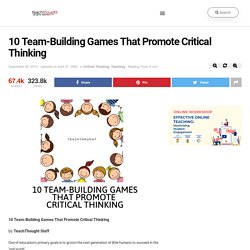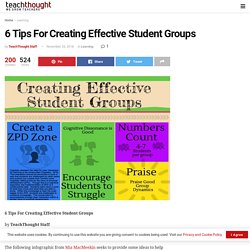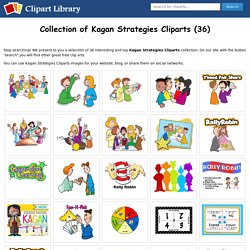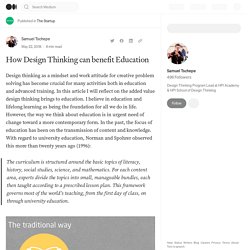

The Jigsaw Method. 10 Team-Building Games That Promote Collaborative Critical Thinking. 10 Team-Building Games That Promote Critical Thinking by TeachThought Staff One of education’s primary goals is to groom the next generation of little humans to succeed in the ‘real world.’

Yes, there are mounds of curricula they must master in a wide breadth of subjects, but education does not begin and end with a textbook or test. Other skills must be honed, too, not the least of which is how to get along with their peers and work well with others. 10 Ways to Incorporate Collaborative Learning Daily – Vision in Practice. 6 Tips For Creating Effective Student Groups. 6 Tips For Creating Effective Student Groups by TeachThought Staff Grouping students is easy; creating effective student groups is less so.

The following infographic from Mia MacMeekin seeks to provide some ideas to help make group work easier in your classroom. The strength of this particular graphic is in the range of the ideas. 10 Team-Building Games That Promote Collaborative Critical Thinking. 6 Collaborative Social Tools for Student Writing & Collaboration Lessons, Assignments.
Collaborative Software With Social Functionality can be a Powerful Asset in the Classroom Teachers who have taken the dive into education technology have infinite teaching and learning possibilities at their fingertips.

One category of technology tools that is often purposefully avoided as an instructional asset is social media. What can hardly be avoided, however, is the way that functionality that is common in mass social media applications has influenced other types of software applications. Collaborative, socially-enabled tools can provide excellent opportunities for practice, assessment, better writing, and better communication. Free Kagan Strategies Cliparts, Download Free Clip Art, Free Clip Art on Clipart Library. Stop searching!

We present to you a selection of 36 interesting and top Kagan Strategies Cliparts collection. On our site with the button "search" you will find other great free clip arts. Collaborative Learning Builds Deeper Understanding. Seminari web: L' Aprenentatge cooperatiu: estratègies que funcionen. 60 Second-Strategy: Cooperative Learning Roles. Nancy Madden - Aprenentatge cooperatiu en acció: estratègies que funcionen a l'aula? (resum) Aprendizaje colaborativo/Aprendizaje colaborativo y cooperativo. Diferencias entre el paradigma de aprendizaje cooperativo y aprendizaje colaborativo En la literatura aparece reiteradamente el término aprendizaje colaborativo vs. cooperativo.

Aunque algunos autores tienden a homologarlos, existen diferencias entre ambos básicamente porque el aprendizaje colaborativo responde al enfoque sociocultural y el aprendizaje cooperativo a la vertiente Piagetiana del constructivismo. Las diferencias esenciales entre estos dos procesos de aprendizaje es que en el primero los alumnos son quienes diseñan su estructura de interacciones y mantienen el control sobre las diferentes decisiones que repercuten en su aprendizaje, mientras que en el segundo, es el profesor quien diseña y mantiene casi por completo el control en la estructura de interacciones y de los resultados que se han de obtener (Panitz, 2001).
No obstante, la premisa básica de ambos paradigmas está fundada en el enfoque constructivista. Collaborative learning vs. cooperative learning: what's the difference? When it comes to students working together, the terms collaborative learning and cooperative learning are often used interchangeably.

Trabajo colaborativo - 1. Introducción - Trabajo colaborativo - 1. Introducción. Cooperation vs Collaboration: When To Use Each Approach. Cooperative Learning Demo. Cooperative vs Collaborative. Roles De Grupos Cooperativos Una Pizca De Educación. How Design Thinking can benefit Education – The Startup. Design thinking as a mindset and work attitude for creative problem solving has become crucial for many activities both in education and advanced training.

In this article I will reflect on the added value design thinking brings to education. I believe in education and lifelong learning as being the foundation for all we do in life. However, the way we think about education is in urgent need of change toward a more contemporary form. In the past, the focus of education has been on the transmission of content and knowledge. With regard to university education, Norman and Spohrer observed this more than twenty years ago (1996): The curriculum is structured around the basic topics of literacy, history, social studies, science, and mathematics.
Thus, educational design has been focusing on the question of how to get ‘manageable bundles’ of existing knowledge into people‘s brains. The 10 Best Educational Apps that use Gamification for adults in 2018. This post was recently updated to reflect the 10 best educational apps for adults that use Gamification for 2019 Click here to view our full list of our Gamification examples.

Get ready to learn, the fun way! We have scoured the internet and app stores to find the 10 best educational apps that use Gamification for adults. See how companies and organizations are making learning languages, music, coding, art, history, and more fun and exciting for everyone! 10. Gamification in Education: 4 Ways To Bring Games To Your Classroom. What is gamification? Gamification is the use of game design and mechanics to enhance non-game contexts by increasing participation, engagement, loyalty and competition. My Restaurant Project. The key ingredients for successful project-based learning [INFOGRAPHIC] Most people today live in a world of projects. No matter what we do for a living, work projects are everywhere. We need to do research and planning, work in teams, constantly adapt to feedback, all while trying to find the best solutions and keep within budgets.
And even life outside of work is full of projects. Whenever we need to bake a cake, plant a flower, paint a room, repair something around the house or organize a birthday party, we still need to do research and planning, communicate and collaborate with other people, constantly adapt to feedback and manage budgets. I think I made it clear by now that the adult life is full of projects. The education system is supposed to prepare students for the adult life. The logic behind this is the following: if the adult life means dealing with many and various projects, and schools are supposed to prepare students for the adult life, shouldn’t they adopt a project-based approach to education? The answer is a resounding YES!
Sustained inquiry. Gold Standard PBL: Essential Project Design Elements. It’s encouraging that Project Based Learning is becoming popular, but popularity can bring problems.

Here at the Buck Institute for Education, we’re concerned that the recent upsurge of interest in PBL will lead to wide variation in the quality of project design and classroom implementation. If done well, PBL yields great results. But if PBL is not done well, two problems are likely to arise. First, we will see a lot of assignments and activities that are labeled as “projects” but which are not rigorous PBL, and student learning will suffer.
Or, we will see projects backfire on underprepared teachers and result in wasted time, frustration, and failure to understand the possibilities of PBL. VIDEO: March Through Nashville. 15 documentos imprescindibles para alumnos que trabajan por proyectos. 12 Curriculum Planning Tips For Any Grade Level Or Content Area. 12 Curriculum Planning Tips For Any Grade Level Or Content Area by Terry Heick Learning is really just a growth in awareness.

From not knowing to knowing is part of it, but that’s really too simple because it misses all the degrees of knowing and not knowing. One can’t ever really truly understand something any more than a shrub can stay trimmed. 249 Bloom's Taxonomy Verbs For Critical Thinking. 100+ Bloom’s Taxonomy Verbs For Critical Thinking by TeachThought Staff Ed note: This post was first published in 2013 and updated in December of 2019. Critical Thinking With TeachThought: Grow Your Teaching. AnswerGarden: Plant a Question, Grow Answers! Generate a live word cloud with your audience.
Manage your class, add a countdown, display information of any kind, etc. Cooperative Learning Kagan Quick Reference Guide. Què és Aprenentatge Cooperatiu? — Recerca i Innovació en Metodologies d'Aprenentatge. RIMA.